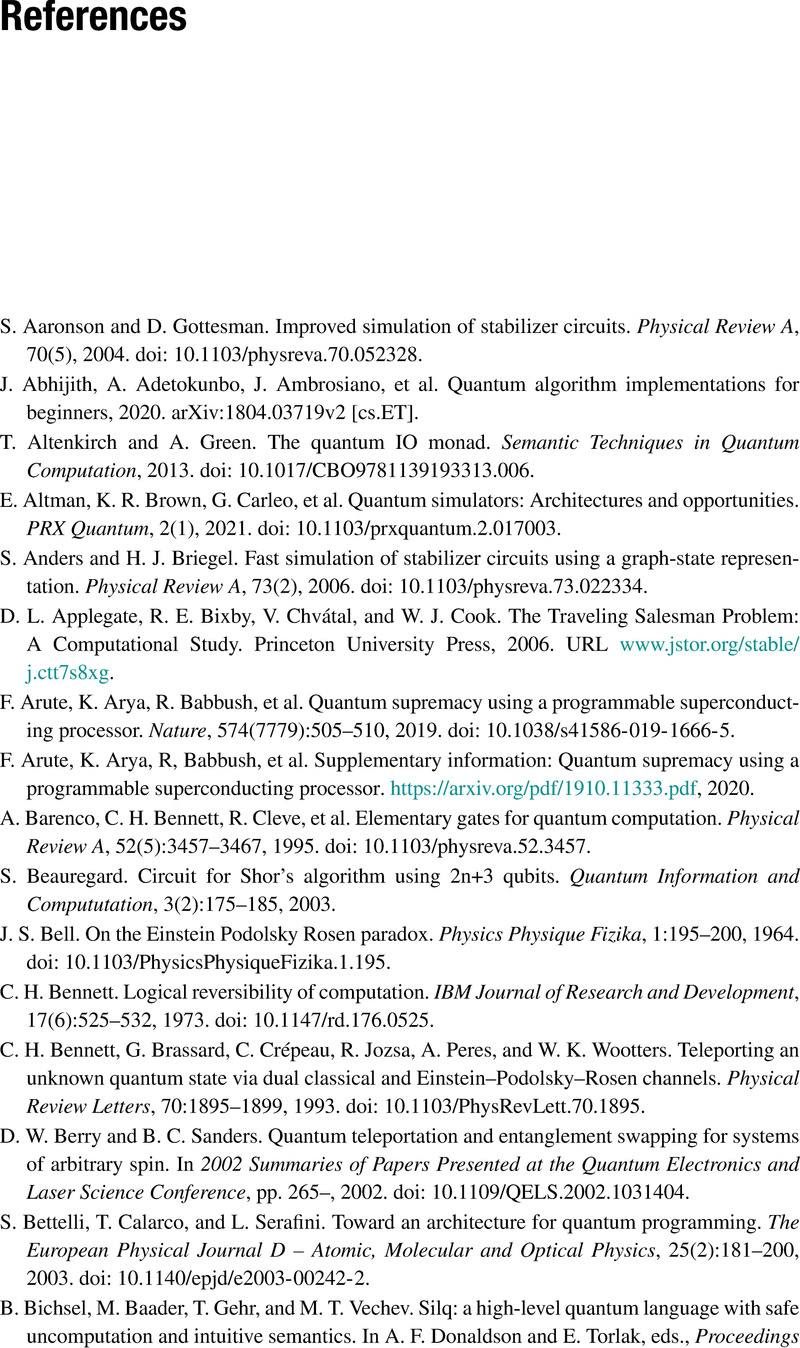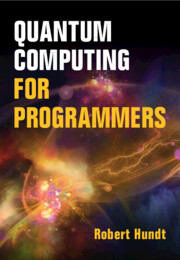Book contents
- Frontmatter
- Dedication
- Contents
- Acknowledgements
- Introduction
- 1 The Mathematical Minimum
- 2 Quantum Computing Fundamentals
- 3 Simple Algorithms
- 4 Scalable, Fast Simulation
- 5 Beyond Classical
- 6 Complex Algorithms
- 7 Quantum Error Correction
- 8 Quantum Languages, Compilers, and Tools
- Appendix Sparse Implementation
- References
- Index
- References
- Frontmatter
- Dedication
- Contents
- Acknowledgements
- Introduction
- 1 The Mathematical Minimum
- 2 Quantum Computing Fundamentals
- 3 Simple Algorithms
- 4 Scalable, Fast Simulation
- 5 Beyond Classical
- 6 Complex Algorithms
- 7 Quantum Error Correction
- 8 Quantum Languages, Compilers, and Tools
- Appendix Sparse Implementation
- References
- Index
- References
Summary

- Type
- Chapter
- Information
- Quantum Computing for Programmers , pp. 335 - 342Publisher: Cambridge University PressPrint publication year: 2022



